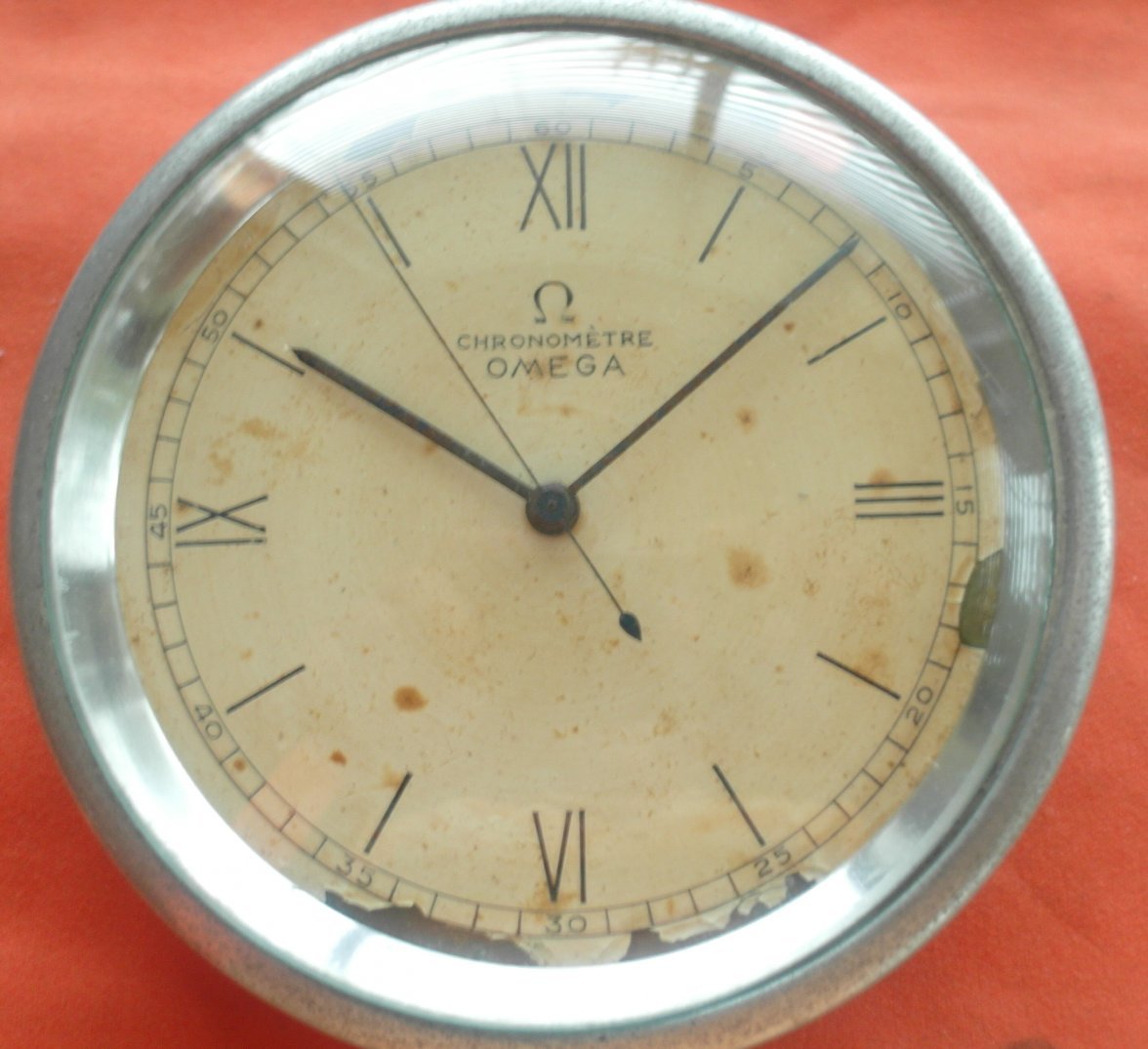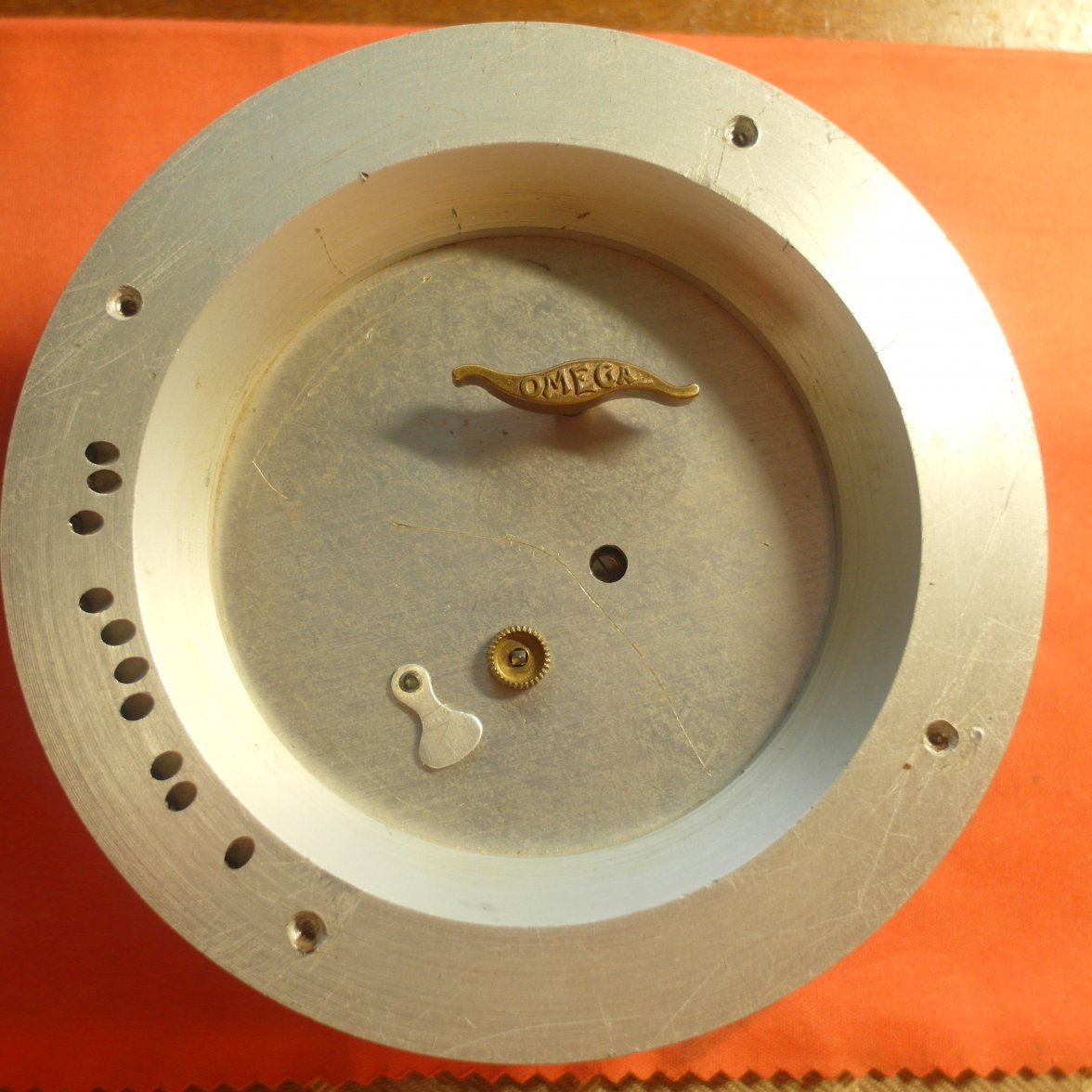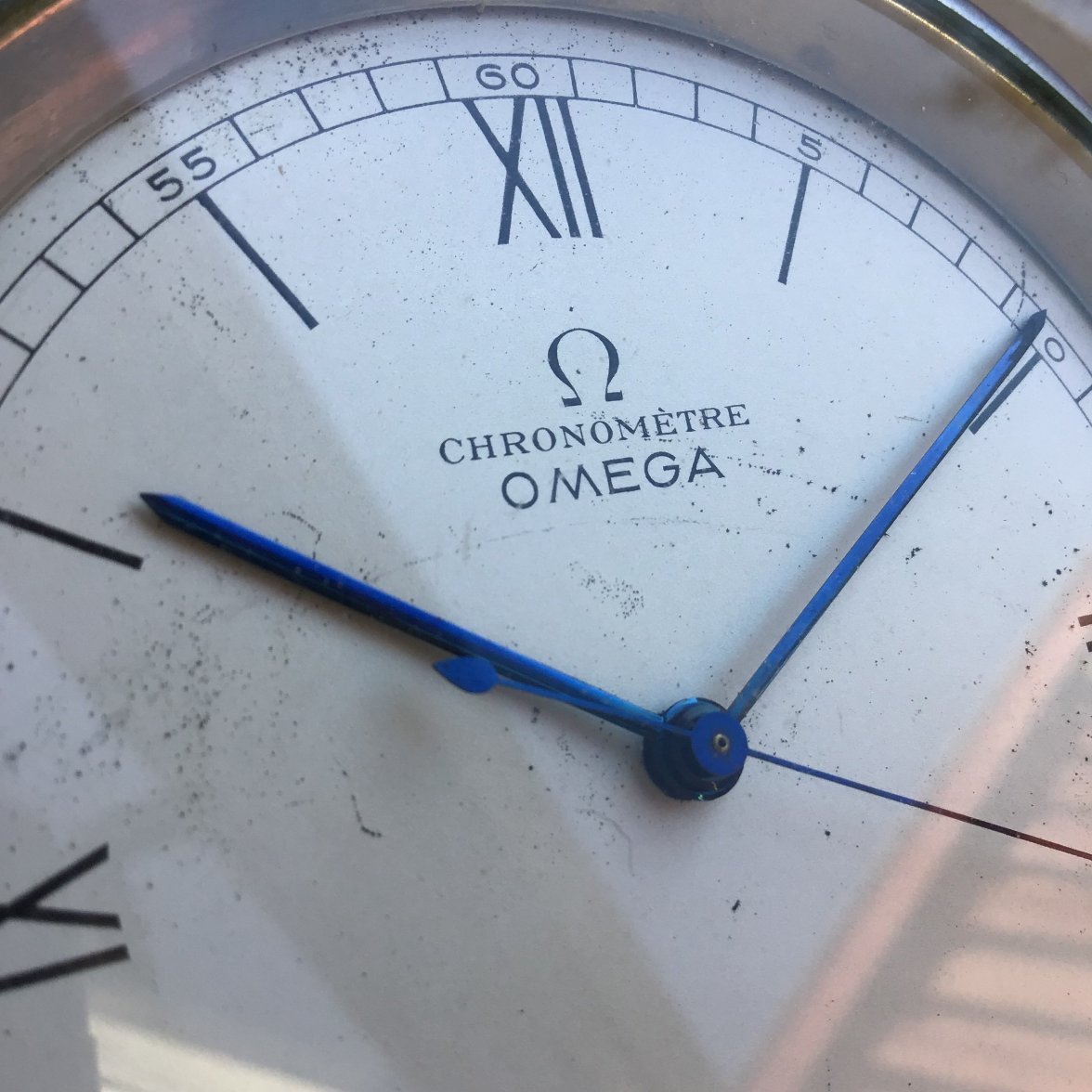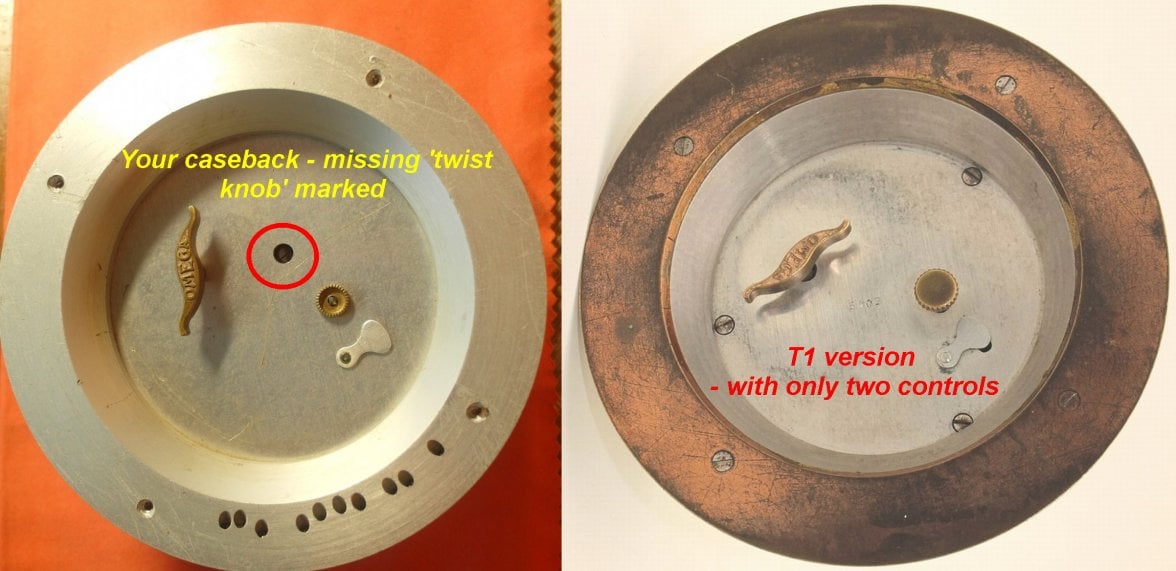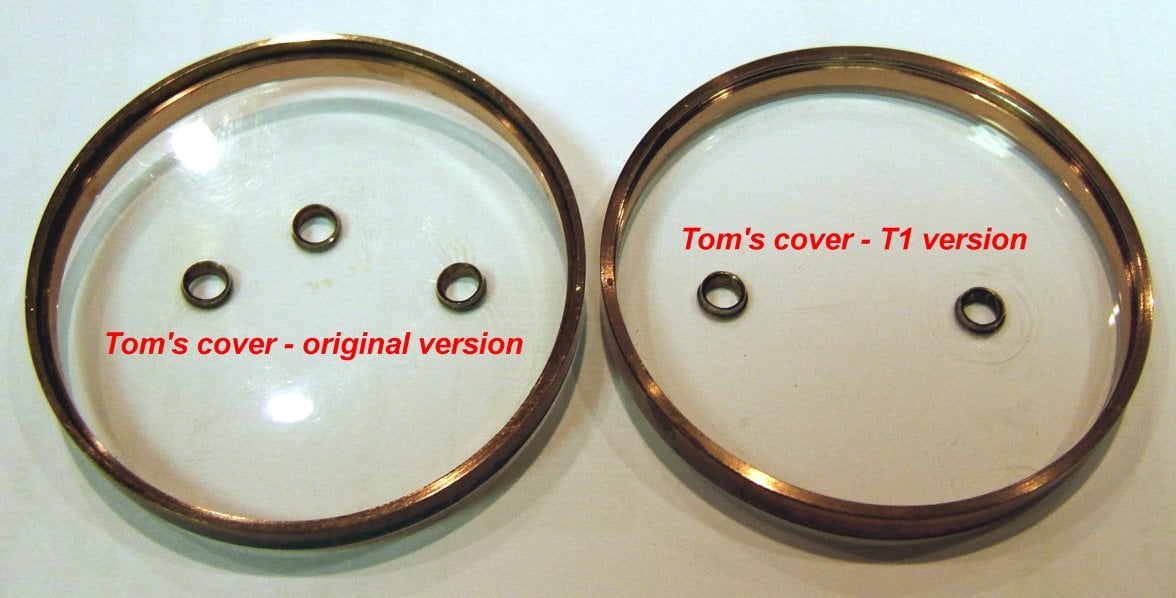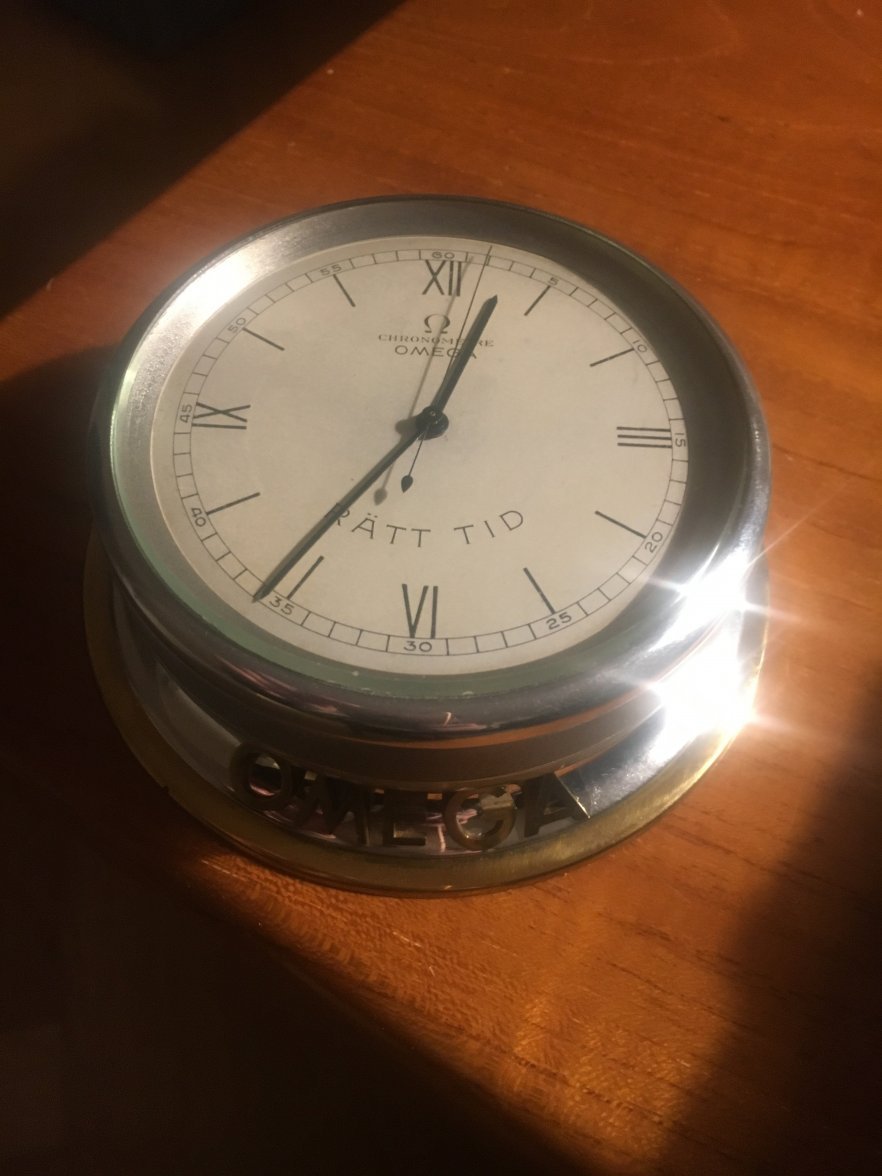The quick answer is that it would be a knob where the empty hole is.
The 59-8D SCS (which later became the Cal.120), used two different hacking methods (I have seen a third but I think it was only a prototype). The image below shows the detail of the hacking mechanism.
The original version used a ‘twist knob’ which introduced a tiny blade into the jump second wheel (which stopped it). This version therefore had three ‘controls’ – the winding key, the time setting knob and the hacking knob.
The T1 version (which came after only one year) used a tiny bar which was depressed using the time setting knob and bore against the alternating split second escapement arm. This version therefore had only two controls.
Your watch is of the first variety (which is why there are three holes in the alloy base). The image below shows a 5003 like yours – but a later version with only the two controls, and thus only two holes.
The other type of case for the 59-8D SCS used a plastic movement cover (through which the movement could be seen). The image below shows a cover from each of the versions described, with respectively two and three holes.
In my opinion a beautiful movement.
It is not unusual to find these clocks without a second hand. I have heard sellers explain that Omega made a version with no second hand – which is rubbish! It usually means that there had been a problem with the jump second system which was too difficult for the watchmaker to repair – so he removed the whole jump second mechanism (leaving an accurate clock but without a second hand). The whole point of the movement was that it was a ‘jump second’ – hence ‘SCS’.
I hope that helps Achim. Tom
